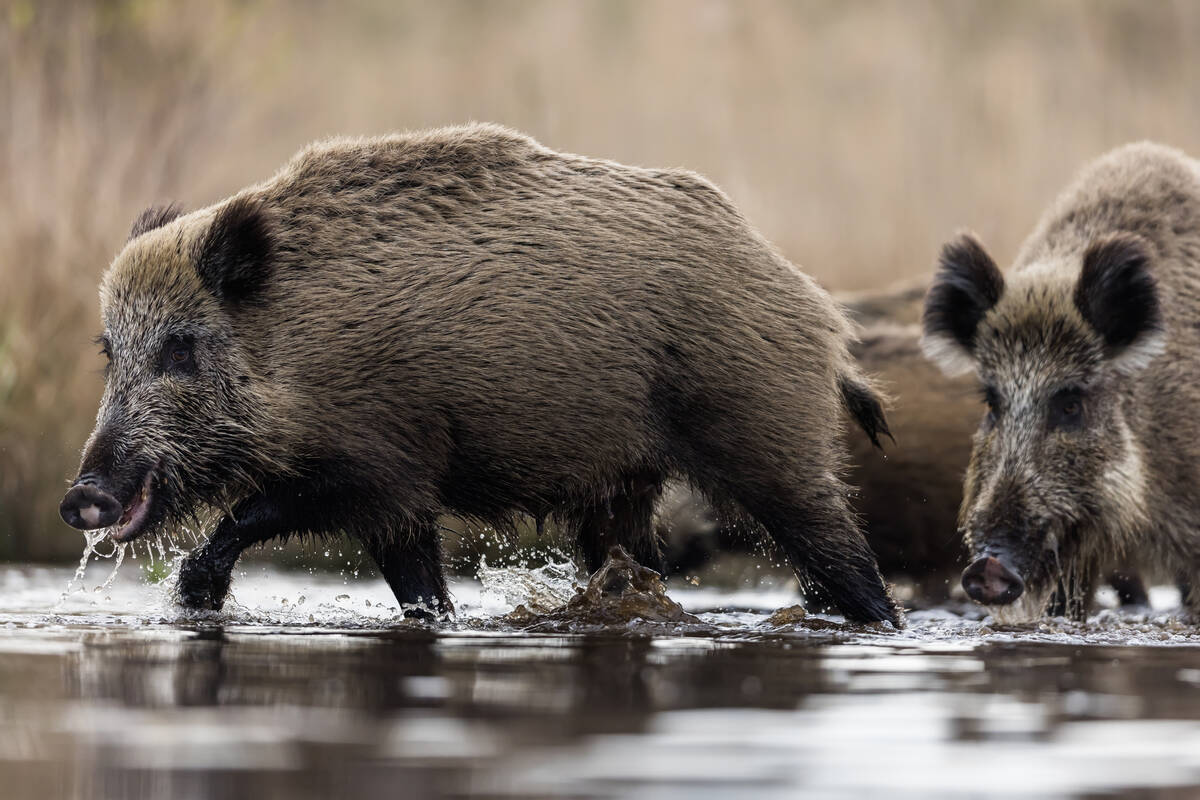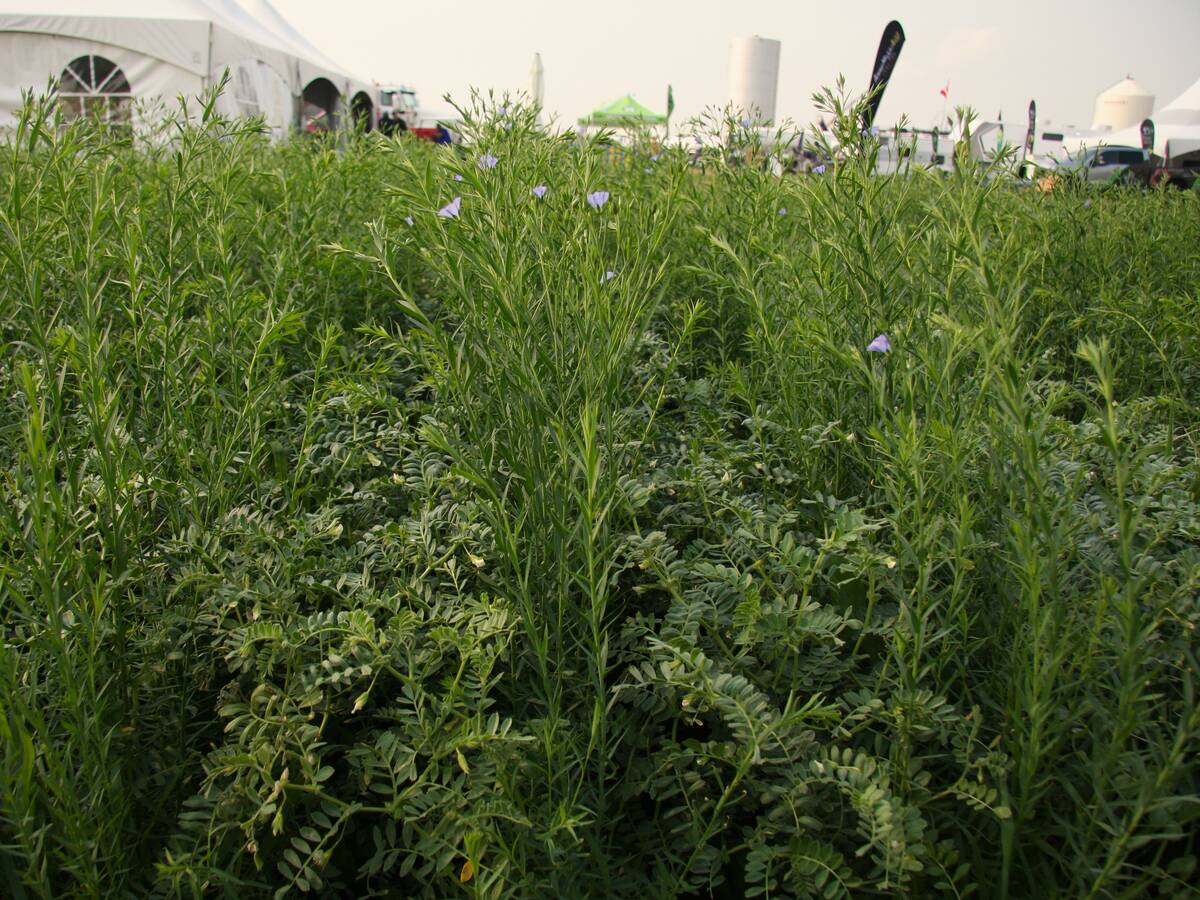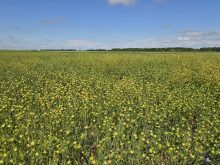LANGHAM, Sask. — Chickpea crops in Saskatchewan are regularly plagued by Ascochyta blight, a fungal disease that will wreak havoc on the leaves and stem causing a reduction in yield and overall plant health.
The typical methods of disease management are the “normal” tools of fungicide, smart crop rotations and proper seed placement among others. But a group of researchers at Agriculture and Agri-Food Canada (AAFC) have been hard at work trialling chickpea-flax intercrops for Ascochyta blight reduction.
The interesting blend can be viewed by producers at Ag in Motion 2025 near Langham, Sask. in the AAFC crop plots. The flax is in bloom, creating a pull to the organization’s booth.
Read Also

Manitoba bans wild boar possession
Manitoba has tightened the regulatory status of Eurasian wild boar in an effort to help fight back against invasive wild pigs.
Follow all our Ag in Motion coverage here
This isn’t the first year the trial has been shared at farm show, and Limin Luan, a research assistant on the team, said it often prompts some questions from producers.
“It’s like an eye catcher,” she said at Ag in Motion. “Like, it’s something different, right? Something new. They have lots of questions about how we plant them, how we harvest them, how we separate the seeds, what kind of depth we seed the two crops together, about seeding rates. You know, they ask very practical kinds of questions.”
The blend has had success in reducing the disease, and producers will remark that they’re interested and would like to try it, but Luan isn’t sure if any have.
The research suggests that intercropping these species together reduces proximity of chickpeas to each other so fungal spores can’t spread as easily and that the blend alters the microclimate in terms of temperature and humidity to reduce an ideal disease environment.
It’s been a long running project, starting in 2012 and having a few rounds of additional trials to build on to the research.
Lead researcher, Michelle Hubbard, has been on the project since 2018, adding new elements to the trials and investigating effects.
The newest variation of the trial that began in 2023 built onto the investigation of intercropping by integrated fungicide use and testing three varieties of flax with three varieties of chickpea — a change from consistently using CDC Glas and CDC Leader.
While the trials have been straightforward overall, Luan and Hubbard both cite challenges with equipment.
“When it comes to seeding, to pick the perfect depth for one seed that’s so big, one so small, this can be very challenging,” Luan said. “Also, after harvesting, how to separate the seeds is extra work for the farmers. So there’s some challenges, but, you know, it’s how you look at it: there’s benefits, but there’s challenges.”
Hubbard added during an interview that another harvest challenge is getting the combine settings just right.
“(You have to be careful) such that you don’t either end up with so much non-seed material, like so much trash or so much residue, or that you don’t blow out your small seeds and not end up and lose a lot of yield,” she said.
Future story on chickpea-flax intercropping will be available in Glacier FarmMedia publications in the coming weeks.
















